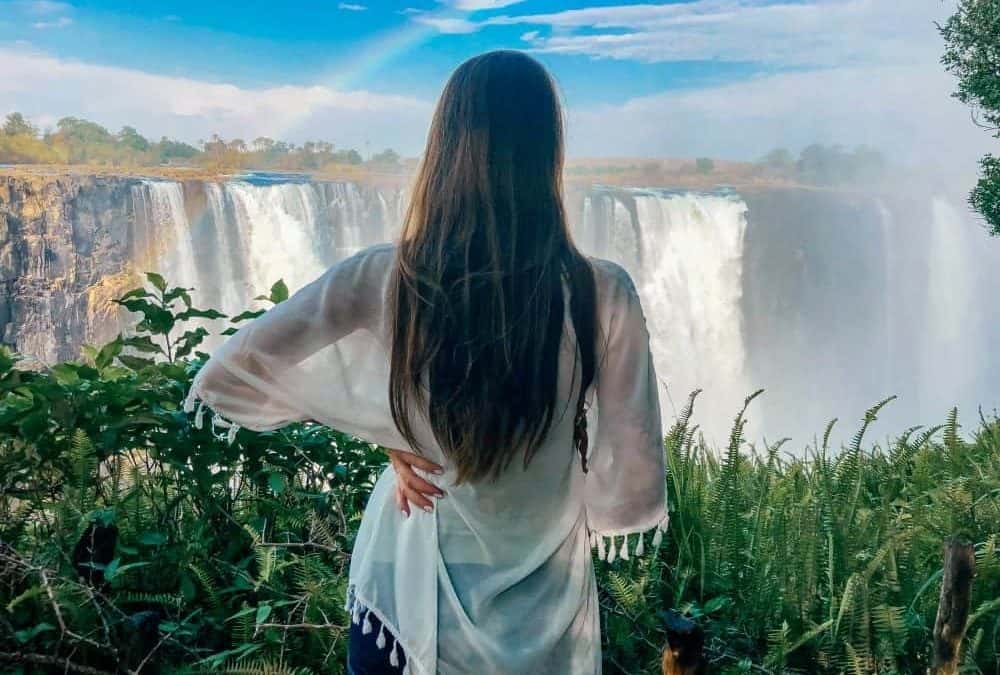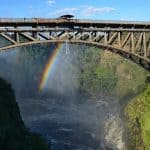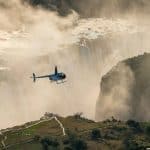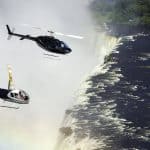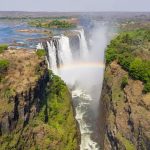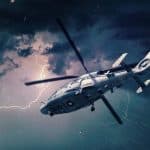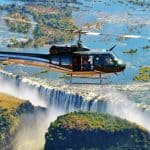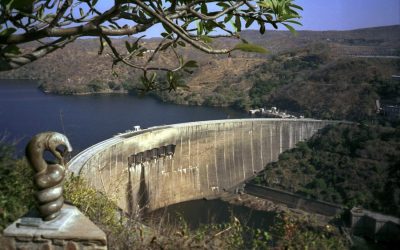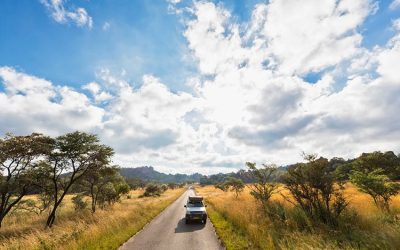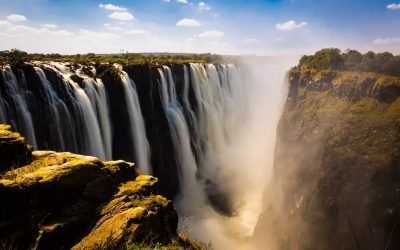Table of Contents
Top 5 Waterfalls in Zimbabwe
If you are planning a trip to Zimbabwe, you have probably already heard about the famous Victoria Falls. It is a world-renowned waterfall, providing habitat to unique species of plants.
The falls are on the Zambezi River in southern Africa and straddle the border between Zimbabwe and Zambia. At 1,708 metres in width, Victoria Falls is one of the world’s most impressive waterfalls.
To get the full experience, visit the falls yourself and learn about the various ecosystems that live there.
Victoria Falls
If you’re a nature lover, you’ll want to visit the magnificent Victoria Falls in Zimbabwe. This natural wonder spans Zambia and Zimbabwe and is regarded as one of the Seven Wonders of the World. The falls are the largest sheet of falling water in the world and are so powerful that they are considered a natural wonder. Visitors can walk along pathways to the edge of the falls and view the roaring water and rushing spray.
Despite its spectacular natural wonder, Victoria Falls have one major drawback: it’s incredibly cold. This is a common misconception among first-time visitors to the Falls. You need to pack warm clothes and a jacket for the colder months, as the falls dry up during winter on the Zambian side. However, you can easily avoid the worst weather conditions by packing a light jacket and a raincoat. You’ll be rewarded with views of the falls from helicopters and microlights.
The best time to visit the falls depends on the season you visit and the experience you want. The Falls are at their highest in April and May, when the water is most powerful. The spray from the falls can also limit visibility, so you’ll want to wear rain gear to keep yourself dry. If you’d like to experience the falls from a different perspective, you can go during the tail end of the dry season. You can also take advantage of white water rafting and game viewing in the surrounding areas during this time.
Mutarazi Falls
If you have ever wanted to experience a natural swimming pool, you should visit Mutarazi Falls in Zimbabwe. This breathtaking waterfall, which is the second-highest in Africa, originates from the eastern escarpment of Zimbabwe’s highlands. The pool is surrounded by large brown rocks and beautiful tree ferns. The water is warm and inviting for swimming. Listed as a World Heritage Site by UNESCO, Mutarazi Falls is a must-see attraction for anyone travelling to Zimbabwe.
Visitors to Mutarazi Falls will be enchanted by the place’s mysterious atmosphere. This area is completely undisturbed, preserving habitat for the local fauna and flora. People who tried to climb down to view the falls were tied to ropes and disappeared into the misty pool below. The falls are a popular tourist destination in Zimbabwe, but the locals tend to avoid this part of the country.
While visiting Mutarazi Falls, you will also want to check out the surrounding area. Mount Nyangani is another natural feature that is located near the waterfall. You can use the Virtlo app offline to find nearby places to explore. In Zimbabwe, you can even download the app and use it on your mobile device. You can also use the app offline to get directions to different spots. The app is free and can even help you plan your own Zimbabwe vacation!
Boiling Pot
The Boiling Pot falls are the largest in the world and are a popular attraction for tourists. The falls are 50 miles/80 kilometres long and have an 800-foot-deep pool that can be explored by boat. A bridge spanning the gorge is 650 feet long and 310 feet above the water. The construction of the Kariba Dam has partially submerged this portion of the gorge. In 1855, David Livingstone visited the falls are now part of two national parks.
The first step is to take a KAZA visa. Visitors must be at least 18 years old to enter Zimbabwe and must have a valid passport. This visa is easy to obtain from major ports of entry in Zimbabwe. This allows them to enter the country with no problems. You can also enjoy the sights and sounds of the Boiling Pot waterfalls. There are several attractions within the park, including a picnic area, which overlooks the gorge.
The Victoria Falls is another great natural wonder located on the Zambezi River. It is 1.7 kilometres wide and 108 meters high, more than twice the height of Niagara Falls. Water from the Zambezi River plunges into the gorge and causes a dense mist and a loud roar. At its widest point, it spans the entire Zambezi River. The falls are located in Zimbabwe and Zambia and are often accompanied by thunder.
Batoka Gorge
For a close-up view of the Falls, head to the Knife-edge Bridge, which crosses the river near the Boiling Pot. From the bridge, you can see the spectacular views of the Eastern Cataract and Main Falls. From here, you can also hike down to Devil’s Pool and Lookout Tree. Before crossing the bridge, you’ll need to purchase a KAZA visa, which you can get at the major ports of entry.
The project is estimated to cost about four billion dollars and will take between 10 and 13 years to complete. However, many such high-cost infrastructure projects never make it to completion in Zambia. What’s more, much of the electricity that will be generated will be sold to foreign countries and leave the local people without enough to live on. Hence, it’s imperative that people living in these regions do not get displaced by the project.
The Batoka Gorge is a 120-kilometre-long gorge surrounded by sparse mopane forest. It has an average depth of 400 feet and is an excellent destination for a one-day white-water rafting adventure. Known for its rapids, the rapids have nicknames like “Oblivion” and “Devil’s Pool.”
Eastern Cataract
While it’s possible to see Victoria Falls from either Zambia or Zimbabwe, visiting Eastern Cataract in Zimbabwe will give you the best view of this spectacular waterfall. The waterfalls are split into five distinct sections – the Main Falls, Horseshoe Falls, Rainbow Falls, and Devil’s Cataract. You can even walk across the Knife-Edge Bridge. The falls also feature several viewing platforms and a swimming hole known as the Boiling Pot.
To see the Eastern Cataract in its full glory, visit between July and August when the water levels are low enough to allow for clear views. These months coincide with the best times of the year for game viewing in the region. The days are warm at 28 degrees Celsius, and you can expect to find plenty of wildlife here. The best view is from the Zimbabwe side, where the curtain of water splits into individual streams.
While visiting Victoria Falls, be sure to take the time to walk the trails along the cliffside. There are views of Victoria Falls from 16 unobstructed viewpoints. Depending on the season, you can take in the roar of the water while you feel the spray. You might even hear the thunder of the waterfall. Regardless of which waterfall you choose to see, you’ll be in awe of the dramatic beauty of this world’s wonder.
Boiling Pot Falls
The black basalt wall of Boiling Pot Falls makes it difficult to overlook the majestic waterfall. The surrounding rock echoes the roar of the water and magnifies its majesty. It was awe-inspiring enough to evoke the image of the infernal regions, as described by Major A de Serpa Pinto. The Zambian side of the Falls has a Palm Grove, which leads to the water’s edge.
Before embarking on the hike, participants must remove their life jackets and helmets. The view from the waterfall is breathtaking, but be aware that you will be hiking on the craggy ground. It also involves some rafting and substantial climbing on rocky surfaces. Wear comfortable clothing and wear comfortable hiking shoes. A hat will keep your head and neck warm. You should bring your own water bottle and extra money to purchase drinks and snacks on your way to the waterfalls.
After you’ve enjoyed the views of the Victoria Falls, take a rafting trip through the Batoka Gorge. The journey begins at Livingstone Island, and you will take a scenic route back to the falls. On the way down, take a dip in a pool between rocks. As the water rises and falls, you’ll come to an end at the base of Boiling Pot Falls, which is the highest point in Zimbabwe.

